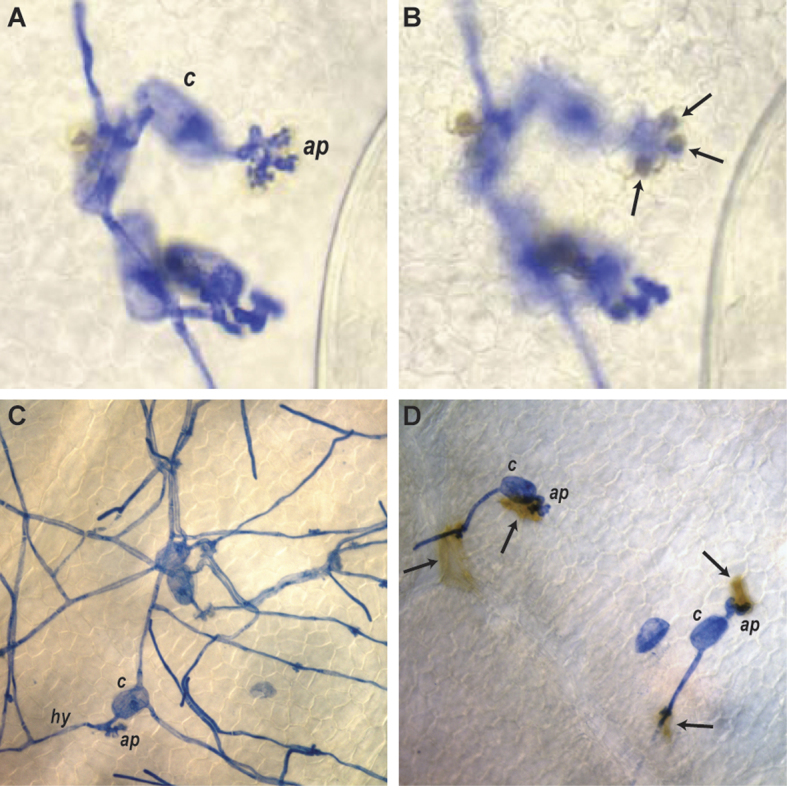Figure 1.

Mechanisms of grapevine defense against the biotrophic fungal pathogen powdery mildew (E. necator). Grapevine powdery mildew spores were inoculated onto detached leaves of M. rotundifolia (A & B), V. vinifera cv. Cabernet Sauvignon (C) and a V. vinifera backcross progeny plant containing the powdery mildew resistance gene MrRUN1 (D). Leaf samples were collected after 2 days and fixed and stained with Coomassie brilliant blue to visualize fungal structures. Panels A and B represent the same field of view but are focused at different levels to show the germinated conidium (c) and appressoria (ap) on the surface of the leaf (panel A) and the globular papillae (arrows) beneath the appressoria (panel B) which are blocking penetration and haustoria formation. Panel C shows normal growth of E. necator hyphae (hy) across the leaf surface of a susceptible grapevine cultivar. Panel D shows the induction of MrRUN1-mediated programmed cell death in penetrated epidermal cells (arrows) which effectively halts further growth of this biotrophic pathogen.
